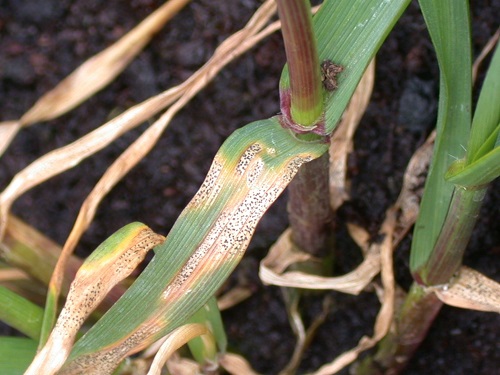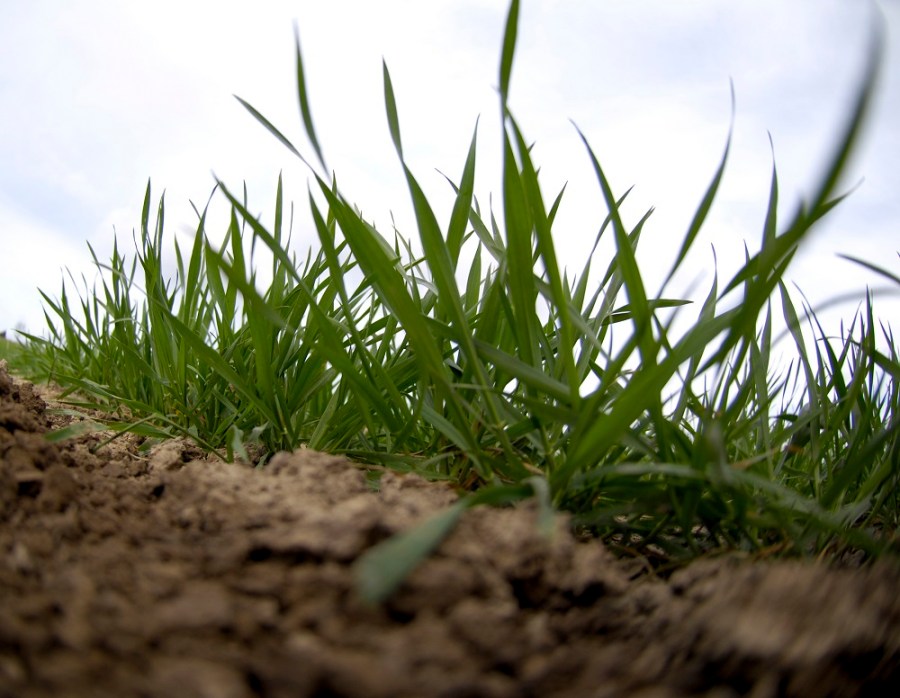Before the sprayer swings into action in the coming spring, fungicide strategies are being decided as the winter passes in a whirl of conferences and technical meetings. CPM finds out the latest on fungicide performance and gleans the Adama view on how to best protect chemistry and crops.
We can’t afford to get into a curative situation with septoria.
By Lucy de la Pasture and Paul Spackman
The latest fungicide performance data was unveiled by NIAB’s Stuart Knight at the AHDB Cereals and Oilseeds Agronomist Conference in Dec. The headlines were a continuing slide in azole performance against septoria and an increasing gap in efficacy between epoxiconazole and prothioconazole in a protectant situation, with the latter standing up better to resistance pressure.
“In an eradicant situation for septoria, there’s a much smaller difference in performance between the two azoles, though prothioconazole still appears to have a slight edge,” he notes.

The highly insensitive C-H152R strain of septoria was found again in 2016 at low levels.
The SDHI products all continued to give good performance on septoria and are very hard to pull apart in terms of efficacy, he believes.
“Prising them apart for small differences, Ascra Xpro (bixafen+ fluopyram+ prothioconazole) looks to offer a degree of additional control over Aviator Xpro (bixafen+ prothioconazole). Vertisan (penthiopyrad) plus Ignite (epoxiconazole) performed slightly less well than the others. This could be due to a number of reasons but it’s important to remember the performance data is from single product trials so does not represent programmes that are used commercially in the field where these differences are unlikely to be significant.
Septoria Protectant

Source: AHDB fungicide performance trials 2016.
In Jan, AHDB released comparative fungicide data that included the newly registered SDHI Elatus Era (benzovindiflupyr+ prothioconazole), from Syngenta.
According to Dr Paul Gosling, who manages fungicide performance research at AHDB, “Elatus Era has only been in trial for one year but we can be confident in releasing the findings for septoria in wheat and rhynchosporium in barley, because the product was tested at multiple sites.
“Based on dose-response information, Elatus Era shows strong performance against septoria and rhynchosporium in both protectant and eradicant situations.
“This is in line with the general performance of the best other commercially available fungicides tested and gives growers a useful alternative option as we head into the 2017 spray season.”
How long the SDHIs maintain their field performance on septoria, in light of the insensitive strains detected in 2015, is the question everyone wants to know the answer to. ADAS’ Dr Neil Paveley presented the results of monitoring during the 2016 season which found low-moderate SDHI insensitivities in the late-season septoria samples taken from SDHI-treated wheat fungicide trial sites. Fortunately, for the moment, highly insensitive strains remain rare so are unlikely to affect septoria control in the field.
So how can we avoid selecting for fungicide-insensitive strains and prolong the life of our current chemistry? Based on the latest research findings, Neil Paveley believes azole applications, other than when used as a partner to SDHIs, should be minimised where possible. Where SDHIs are applied, he advises they should be used with a robust rate of azole and a multisite.
“Multi-site acting fungicides have low resistance risk. They should be used as mixture partners to enhance effectiveness and protect azoles and SDHIs against resistance.
Septoria Eradicant

Source: AHDB fungicide performance trials 2016.
“Use the minimum dose of SDHI required to obtain effective control. The use of two applications of SDHI should be the exception, rather than the norm,” he warns. “But maintain flexibility in the programme to use two applications of products containing SDHI when needed.”
Multi-site chemistry should be the cornerstone of wheat fungicide strategies this spring if growers are to prolong the efficacy of SDHIs and triazoles, agrees Adama’s technical specialist, Andy Bailey.
“Although we haven’t seen a decrease in field performance of SDHIs yet, the threat is there so we have to protect this single-site mode of action chemistry from the start. The use of multi-sites is vital to prolong the effective life of SDHIs and prevent further erosion of azole efficacy.”
Azoles still offer a reasonable level of protectant activity, but their curative action is greatly diminished and there has also been a notable increase in the number of highly resistant septoria strains, he says. “This is concerning as it will accelerate the erosion of field performance.”
Tighter regulation is further placing more pressure on the remaining actives, making it vital to protect what’s left, he adds.
Multi-sites for tackling septoria in wheat are chlorothalonil, folpet and mancozeb, all of which have proven very low resistance risk. They’re best used early, in protectant situations before disease is present, which means the T0 and T1 spray timings are key, he adds.
“With good autumn establishment in many areas – apart from some parts of the southeast – there’s potential for thick advanced crops going into spring, which will require early protection to minimise the chances of septoria development. We can’t afford to get into a curative situation with septoria.”
He says fungicide choices should be tailored to specific varieties and field conditions, but in general he recommends beginning programmes with a robust dose of a multi-site, such as folpet, at T0.
Growers should avoid over-reliance on azoles and consider alternatives, such as a strobilurin-based product where yellow rust risk is high at this early timing. He suggests saving robust (at least three-quarter rate) doses of azoles for use with an SDHI at T1 or T2.
Folpet also offers good yellow rust activity, he notes. Trials in Reflection (rated 6 for yellow rust) during 2016, found inclusion of folpet (1.5 l/ha Arizona) alongside epoxiconazole at T1 gave around 15% more green leaf retention than epoxiconazole plus chlorothalonil, worth an extra 0.79t/ha on final yield.
It’s also been shown that folpet can increase plant uptake of partner products applied in tank mix. In Silsoe spray trials, only 45% of the epoxiconazole applied with chlorothalonil was taken up by wheat plants 10 hours after application, compared with 55% in the epoxiconazole plus folpet mix. After 25 hours the gap was more pronounced, at 45% and 70% uptake respectively.
“We’ve seen the same trend with prothioconazole and fluxapyroxad, although the difference wasn’t as stark as with epoxiconazole.”
Recent research suggests folpet could also prolong the life of fungicides at high risk of resistance development.
Modelling studies by ADAS and Rothamsted Research found the inclusion of folpet doubled the life expectancy of high risk fungicides. The studies looked at the ‘effective life’ of products, which was defined as the number of years which the fungicide can keep the loss of crop canopy healthy area duration below 5% during the yield forming period.
In the case of epoxiconazole, the effective life when used in a variable dose tank mix strategy increased from 8 to 16 years, while for strobilurins it increased from four to eight years.
This was further supported in 2014 field trials by Irish research body Teagasc, where the inclusion of folpet with full-rate epoxiconazole at two timings (GS 31 and 39) reduced the number of insensitive septoria strains compared with straight epoxiconazole. “Adding folpet appears to reinforce protection of the azole and reduce selection pressure,” explains Andy Bailey.
A similar, but less pronounced, effect was seen when folpet was included with Vertisan (penthiopyrad) plus prothioconazole, he adds.




